Our Las Vegas Podiatrist Provides Effective Heel Pain Treatment Options
Are you finding yourself unable to fully savor the Las Vegas experience due to the debilitating effects of heel pain? Don't let this condition hold you back any longer.
At Centennial Foot & Ankle, experienced podiatrist Dr. David Biesinger and his team provide comprehensive solutions to alleviate your heel pain. From strolling along the iconic Strip to dancing the night away, our goal is to help you make the most of what our city has to offer.
Common Causes of Heel Pain
Heel pain is one of the most common foot problems. While it can have various causes, a few conditions account for the majority of cases.
Plantar Fasciitis
Plantar fasciitis is one of the most common causes of heel pain. It occurs when the plantar fascia, a thick band of tissue running along the bottom of the foot from the heel to the toes, becomes inflamed. The plantar fascia acts as a shock absorber and supports the arch of the foot. When this tissue is overstretched or overused, small tears can develop, leading to inflammation and pain near the heel.
The pain from plantar fasciitis is often most severe in the morning with the first few steps after getting out of bed or after periods of inactivity. It may also flare up after prolonged standing or physical activity.
Achilles Tendonitis
The Achilles tendon is the largest tendon in the body, connecting the calf muscles to the heel bone. This strong cord of fibrous tissue allows you to push off with your foot when walking, running, or jumping. However, repeated stress or overuse can lead to inflammation of the Achilles tendon (tendonitis), causing pain and stiffness just above the heel.
While Achilles tendonitis causes heel pain, the discomfort is typically centered at the back of the heel rather than on the bottom like plantar fasciitis. The pain may start as a mild ache that worsens with activity. Over time, the tendon can thicken and develop bumpy areas of scar tissue. Severe cases may even involve tendon tears or ruptures.
Heel Spurs
A heel spur, sometimes called a bone spur, is a bony protrusion that can form on the underside of the heel bone (calcaneus). Heel spurs are often associated with plantar fasciitis, as the excessive stretching of the plantar fascia ligament can cause it to pull away from its attachment point on the heel bone, triggering a bony overgrowth in this area. However, heel spurs can also develop due to strain on the muscles and membranes that attach to the heel bone.
When a heel spur is present, this can result in inflammation, tearing, and bruising of the surrounding muscles, tendons, and connective tissues. The continual rubbing of the spur into the soles of the feet may also produce bruising, swelling, and pain that worsens over time if left untreated. Heel spur pain typically starts gradually and is often most severe when first standing up after resting.
Heel Pain Treatment Options
Our qualified Las Vegas podiatrist can diagnose and suggest treatment to help you gain control over your heel pain so you can protect your mobility for the future. Some heel pain treatments we may recommend include:
- Stretching exercises. These may include calf stretches, plantar fascia stretches, and Achilles tendon stretches. Performing these stretches regularly can help reduce tightness and strain on the affected areas.
- Custom orthotics. These custom-made insoles can provide arch support and cushioning to alleviate pressure on the heels. They also distribute weight properly across the feet and away from areas that are strained.
- Night splints. Wearing these while sleeping to keep the plantar fascia and Achilles tendon in a stretched position. These splints hold the foot in a slightly flexed position, preventing the plantar fascia from tightening up overnight.
- Physical therapy. Physical therapy incorporating ultrasound, ice massage, and therapeutic taping can help relieve symptoms.. Ultrasound can promote healing, while ice massage can reduce inflammation. Therapeutic taping can provide support and relieve strain on the affected areas.
- Proper footwear. Shoes with good shock absorption and adequate cushioning can help reduce stress on the heels during daily activities and exercise. Look for supportive athletic shoes with arch support and a slightly raised heel.
- Medication. Oral anti-inflammatory medication (e.g., ibuprofen, naproxen) and/or corticosteroid injections to reduce inflammation. These medications can help alleviate pain and swelling associated with heel pain conditions like plantar fasciitis and Achilles tendinitis.
- Shockwave therapy. Extracorporeal shockwave therapy (ESWT) uses shock waves to alleviate heel pain by promoting healing and reducing inflammation. This non-invasive treatment can be effective for chronic cases of plantar fasciitis or other heel pain conditions.

